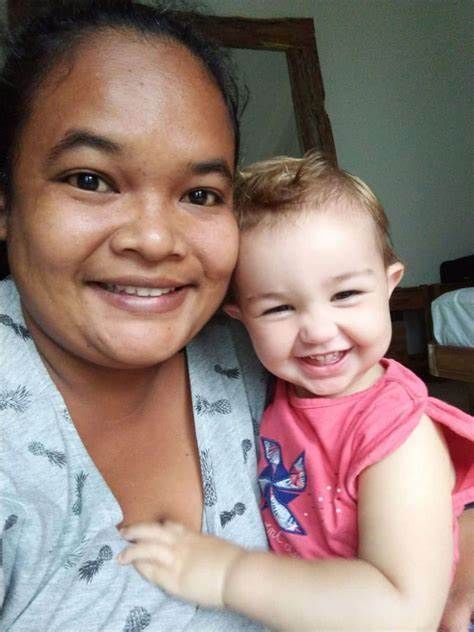Managing Screen Time and Behaviour in 2025: A Complete Guide for Parents
7 minute read
In today’s digital age, screen time is woven into almost every aspect of our children’s lives. From educational apps and online classrooms to entertainment streaming and gaming, technology offers powerful tools for learning and connection. However, excessive or unmoderated screen time can lead to behavioural, physical, and emotional challenges that parents cannot afford to ignore.
At Australian Nanny Agency, we understand the importance of striking a healthy balance — ensuring children benefit from the opportunities of the digital world while building habits that protect their overall development. This guide provides practical, research-based strategies to help parents manage screen time and address behaviours linked to its overuse.
1. Understanding How Screen Time Impacts Children
Screen time can affect childhood development in multiple ways. In moderation, it can:
- Enhance learning through interactive, age-appropriate content.
- Support creativity through tools like coding apps or digital art programs.
- Facilitate connection with friends and family through safe online communication.
However, the risks of excessive screen use are well-documented. Studies from the Australian Department of Health and Harvard Medical School show that too much screen time can:
- Contribute to sleep disturbances by disrupting melatonin production.
- Reduce opportunities for physical activity, increasing the risk of obesity.
- Lead to behavioural issues such as irritability, reduced attention span, or increased aggression.
Expert insight: “Children’s brains are highly responsive to stimulation, and technology provides constant novelty. Without limits, this can lead to difficulty with focus and self-regulation.” — Dr. Michael Rich, Harvard Medical School
2. Establishing Clear and Consistent Boundaries
One of the most effective behavioural management strategies is creating a Family Media Use Plan. This structured approach sets expectations for:
- When devices can be used (e.g., no screens before school or during meals).
- Where devices are used (designating tech-free zones such as bedrooms or the dining table).
- How long screens can be used each day, tailored to the child’s age.
The Australian Government’s Screen Time Guidelines recommend:
- Under 2 years: Avoid screen time other than video calling.
- Ages 2–5: Limit to one hour per day of high-quality content.
- Ages 5–17: No more than two hours of recreational screen time per day, plus regular breaks for study-related use.
Consistency is key. When children know the rules and see them applied fairly, they are more likely to follow them without resistance.
3. Encouraging Engaging, Screen-Free Alternatives
Replacing screen time with enriching activities helps reduce reliance on devices and encourages broader skill development.
Ideas to try:
- Outdoor play: Sports, bike rides, or simple nature walks.
- Creative activities: Arts and crafts, music, or cooking projects.
- Social activities: Board games, family puzzles, or group storytelling.
By giving children attractive options, you minimise boredom and reduce the “default to screen” habit.
4. Using Technology as a Learning Tool, Not a Distraction
The goal is not to ban screens entirely, but to ensure technology serves a purpose. Select high-quality, age-appropriate apps, documentaries, and games that support learning.
Tips for making screen time educational:
- Co-watch or co-play with your child to discuss the content.
- Set goals — for example, finishing a digital art project or completing an online maths module.
- Encourage reflection: Ask your child to explain what they learned or enjoyed most.
By being involved, you turn screen time into an opportunity for bonding and deeper engagement.
5. Modelling Healthy Screen Habits
Children learn most from observing the adults around them. If parents are glued to their devices during family time, children will see that as normal.
Ways to model positive habits:
- Avoid checking your phone at the dinner table.
- Keep your own recreational screen use within healthy limits.
- Suggest family tech-free evenings for activities like cooking together or playing a game.
When children see you choosing to disconnect, they’re more likely to value off-screen time themselves.
6. Maintaining Open Communication About Technology
Open, honest discussions about technology can help children understand why limits exist.
Strategies for effective communication:
- Ask open-ended questions: “What’s your favourite game? Why do you like it?”
- Discuss online safety: Explain the importance of privacy and critical thinking when engaging online.
- Address frustrations: If a child resists limits, listen to their perspective before explaining your reasoning.
Expert insight: “When children feel part of the decision-making process, they are more likely to respect the boundaries you set.” — Australian Childhood Foundation
7. Using Behavioural Management Techniques
Positive reinforcement is a powerful tool for encouraging good screen habits.
Examples:
- Reward following screen rules with extra outdoor playtime or a special family activity.
- Create a token or point system where good behaviour earns small privileges.
- Use praise to reinforce desirable behaviour immediately (“I like how you turned off your tablet without being asked”).
Avoid using screen time as the only reward or punishment, as this can increase its perceived value and lead to power struggles.
8. Building a Support Network
Parents don’t have to manage screen time alone. Nannies, babysitters, extended family, and fellow parents can help maintain consistent rules across different environments.
At Australian Nanny Agency, our professional caregivers are trained in:
- Supporting screen time boundaries.
- Introducing creative, off-screen activities.
- Recognising when screen use is impacting mood or behaviour.
Networking with other parents can also provide new ideas and mutual support.
9. Addressing Screen Time and Behaviour Challenges
If a child’s behaviour changes significantly — increased irritability, withdrawal from offline activities, or declining academic performance — it may be time to:
- Review and adjust screen time rules.
- Consult a paediatrician or child psychologist for guidance.
- Explore whether specific apps or games are contributing to the issue.
Sometimes, targeted changes such as replacing overstimulating games with calmer, educational ones can make a big difference.
10. Creating a Long-Term Healthy Tech Mindset
Ultimately, the goal is not simply to restrict screens, but to teach children self-regulation and balance. This means they learn to manage their own screen use as they grow older, without constant enforcement.
Encourage them to think about:
- How they feel after different types of screen use.
- The benefits of mixing online activities with physical, social, and creative pursuits.
- Making choices that align with their wellbeing.
Conclusion: Balance, Not Bans
Managing screen time and behaviour in children is a long-term parenting skill that blends boundaries, involvement, and flexibility. With consistent rules, engaging alternatives, and a supportive network, screens can become a positive, educational part of life rather than a source of conflict.
At Australian Nanny Agency, we help families find that balance every day — supporting parents with trained caregivers who understand both the benefits and challenges of modern technology.
Remember: The aim is not just to limit screen time, but to
create an enriching environment that nurtures your child’s development in every area — physical, emotional, and social.
Frequently Asked Questions
Q1: How much screen time is healthy for children?
Q1: How much screen time is healthy for children?
The Australian Government recommends no screen time for children under 2, up to one hour per day for ages 2–5, and no more than two hours per day of recreational screen time for ages 5–17.
Q2: What are the negative effects of too much screen time?
Q2: What are the negative effects of too much screen time?
Excessive screen time can lead to sleep problems, reduced physical activity, behavioural issues, eye strain, and reduced attention span.
Q3: How can I set screen time boundaries for my child?
Create a Family Media Use Plan with clear rules on when, where, and how long screens can be used, plus tech-free zones like bedrooms and the dining table.
Q4: What are good screen-free activities for kids?
Outdoor play, arts and crafts, reading, cooking, and family games are engaging alternatives that support healthy development.
Q5: Should I completely ban screens for my child?
Complete bans are rarely necessary. Instead, focus on quality content, time limits, and balancing screen time with other activities.
Q6: How can I make screen time educational?
Choose age-appropriate learning apps, co-watch with your child, and discuss the content to reinforce learning.
Q7: How do I deal with screen time tantrums?
Stay calm, remain consistent with rules, and use positive reinforcement when your child follows screen time limits.
Q8: Can nannies help manage children’s screen time?
Yes, trained nannies can enforce screen time rules, provide creative alternatives, and model healthy technology habits.
Q3: How can I set screen time boundaries for my child?
Q3: How can I set screen time boundaries for my child?
Create a Family Media Use Plan with clear rules on when, where, and how long screens can be used, plus tech-free zones like bedrooms and the dining table.
Q4: What are good screen-free activities for kids?
Q4: What are good screen-free activities for kids?
Outdoor play, arts and crafts, reading, cooking, and family games are engaging alternatives that support healthy development.
Q5: Should I completely ban screens for my child?
Q5: Should I completely ban screens for my child?
Complete bans are rarely necessary. Instead, focus on quality content, time limits, and balancing screen time with other activities.
Q6: How can I make screen time educational?
Q6: How can I make screen time educational?
Choose age-appropriate learning apps, co-watch with your child, and discuss the content to reinforce learning.
Q7: How do I deal with screen time tantrums?
Q7: How do I deal with screen time tantrums?
Stay calm, remain consistent with rules, and use positive reinforcement when your child follows screen time limits.
Q8: Can nannies help manage children’s screen time?
Q8: Can nannies help manage children’s screen time?
Yes, trained nannies can enforce screen time rules, provide creative alternatives, and model healthy technology habits.
READ MORE










